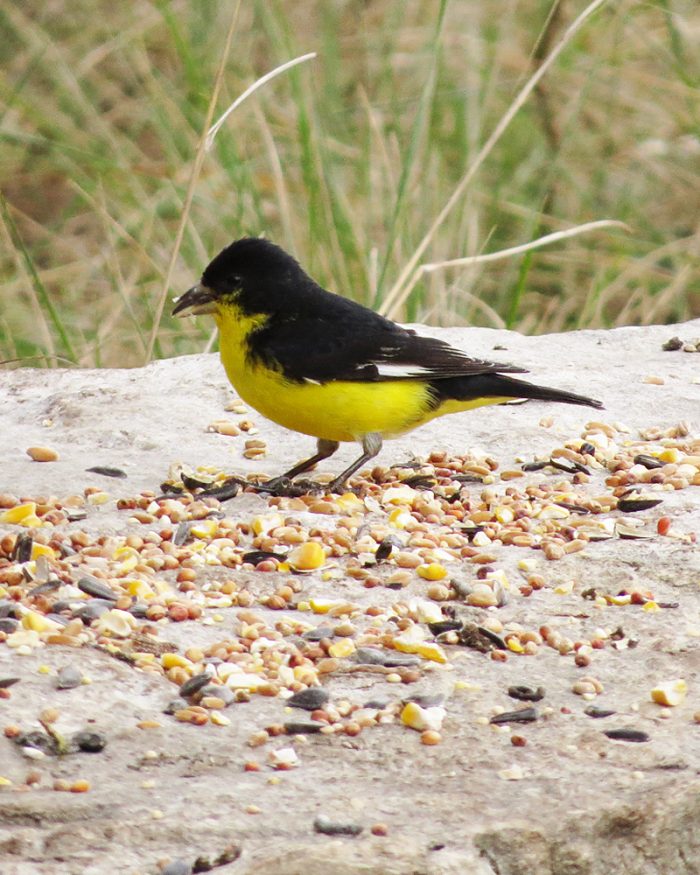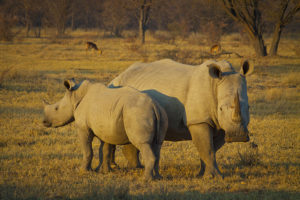Desert Songbirds At Risk in a Warming Climate
Songbirds in the desert of the southwestern United States are being put at greater risk of death by dehydration and mass die-offs due to projected increases in the frequency, intensity and duration of heatwaves, thanks to climate change.
 Image: By Don Faulkner - Lesser Goldfinch, CC BY-SA 2.0, https://commons.wikimedia.org/w/index.php?curid=51970787
Image: By Don Faulkner - Lesser Goldfinch, CC BY-SA 2.0, https://commons.wikimedia.org/w/index.php?curid=51970787 A new study has found that songbirds in the desert of the southwestern United States are at greater risk of death by dehydration and mass die-offs – this is due to projected increases in the frequency, intensity and duration of heatwaves.
Researchers used hourly temperatures maps and other data from a land-surface modelling effort. Alongside physiological data, they used it to investigate how rates of evaporative water loss in response to high temperatures varied among five bird species with differing body masses. They were able to map the potential effects of current and future heat waves on lethal dehydration risk for songbirds in the southwestern US, and how rapidly dehydration can occur in each species.
The species they chose are commonly found in the desert southwest – the lesser goldfinch, house finch, cactus wren, Abert’s towhee and the curve-billed thrasher. Under projected conditions where temperatures increase by 4 degrees Celsius (7 degrees Fahrenheit), which is in line with some scenarios for summer warming by the end of the century, heatwaves will become hotter and occur more often. It will also expand in geographic range to the point where all five species will be at greater risk of death through dehydration.
Birds are susceptible to heat stress in two ways, said co-author Blair Wolf, a professor of biology at the University of New Mexico. “When it’s really hot, they simply can’t evaporate enough water to stay cool, so they overheat and die of heat stroke,” he said. “In other cases, the high rates of evaporative water loss needed to stay cool deplete their body water pools to lethal levels and birds die of dehydration. This is the stressor we focused on in this study.”
At about 40oC (104oF), these songbirds start panting, which increases the rate of water loss very rapidly. “Most animals can only tolerate water losses that result in 15 or 20 percent loss of body mass before they die. So an animal experiencing peak temperatures during a hot summer day, with no access to water, isn’t going to make it more than a few hours.”
As expected, the authors found that the small species are particularly susceptible to lethal dehydration because they lose water at a proportionally higher rate. For example, at 50oC (122oF), the lesser goldfinch and the house finch lose 8 to 9 percent of their body mass to evaporative water loss per hour, whereas the larger curve-billed thrasher only loses about 5 percent of its mass per hour. By the end of the century, the number of days in the southwest desert where lethal dehydration poses a high risk to the lesser goldfinch increases from 7 to 25 days per year. For larger species, those days will also increase, but will remain rare.
But it is not all good news for the larger species. These species are desert specialists and have more specific habitat needs, and therefore have a more restricted range than the house finches and lesser goldfinch, which have a more expansive range. This means that for the larger species, a greater proportion of their population is at risk of dehydration when severe heatwaves occur.
Given this warming scenario, climate refugia such as mountaintops and areas with shade that allow songbird body temperatures to cool will become increasingly important in management plans for these vulnerable species.





No comments yet.